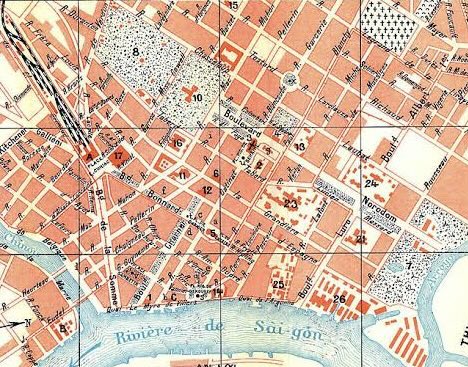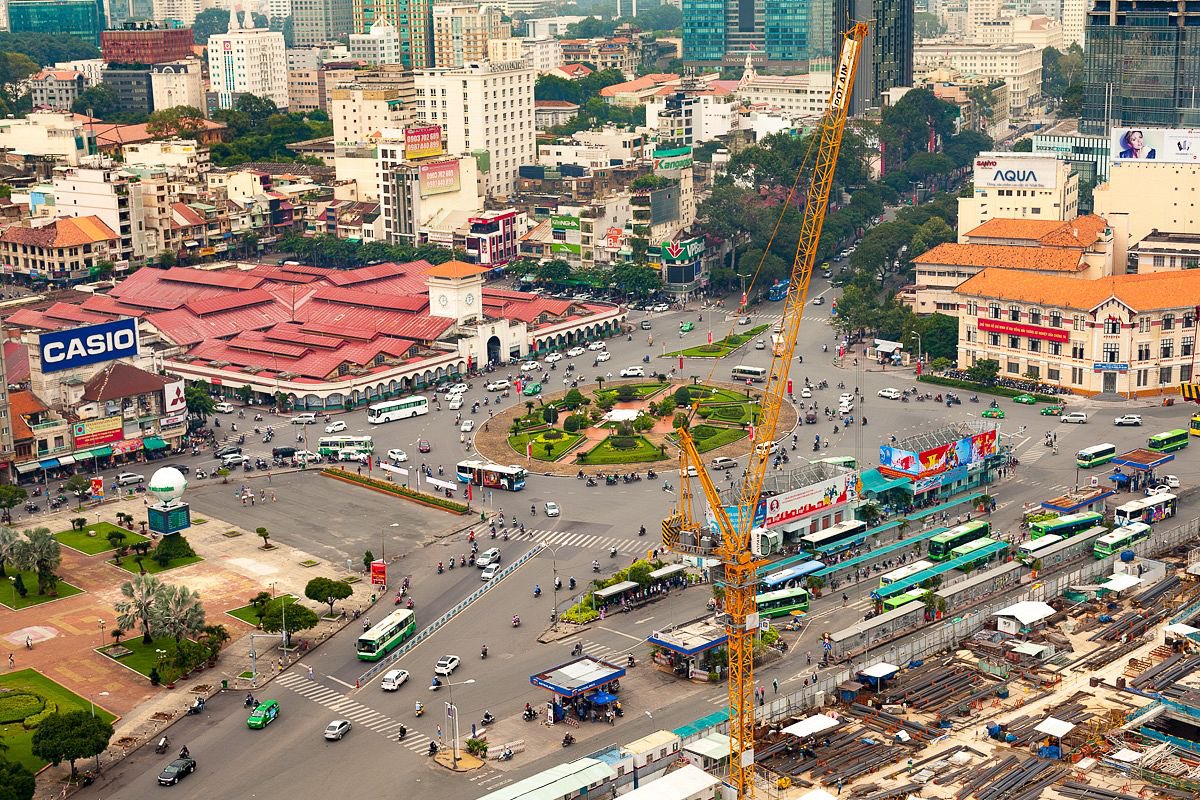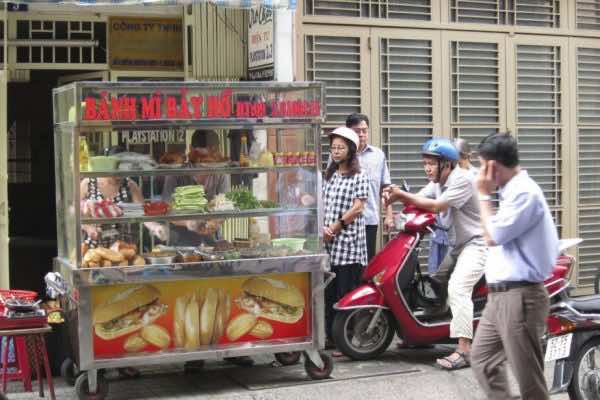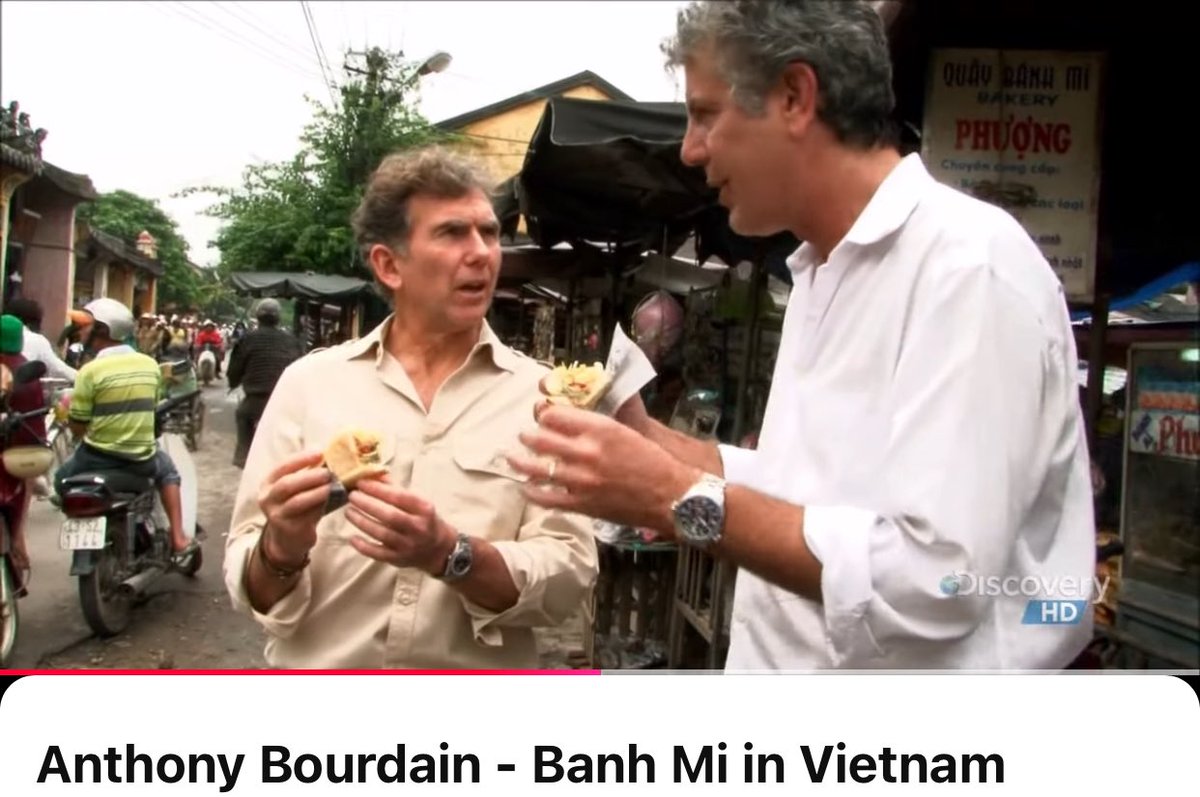Read through Ark Invest's Big Ideas 2021 report.
Here's a tweet and chart for each of the 15 ideas 🧵
Here's a tweet and chart for each of the 15 ideas 🧵
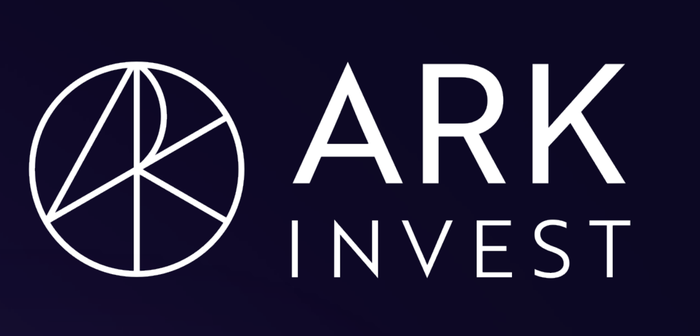
1/ Deep learning to create $30T of market value by 2037
• Automated code writing
• AI that "understands" language (GPT-3)
• Big Tech spends billions on AI chips, everyone benefits
• Automated code writing
• AI that "understands" language (GPT-3)
• Big Tech spends billions on AI chips, everyone benefits
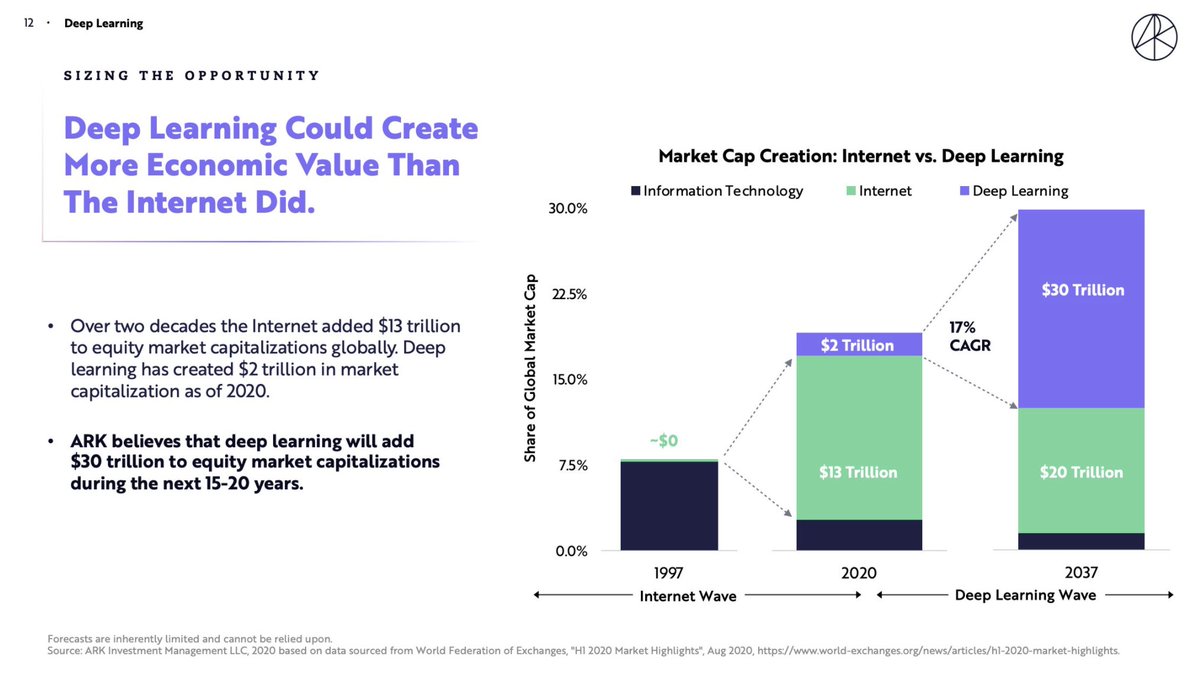
2/ Data centres will be totally transformed
• Intel (which powers 90% of data centres) has fallen behind
• Next-gen data centres/PCs will run on ARM standard
• GPUs (workhorse for AI) hits run rate of $41B in 2030
• Intel (which powers 90% of data centres) has fallen behind
• Next-gen data centres/PCs will run on ARM standard
• GPUs (workhorse for AI) hits run rate of $41B in 2030
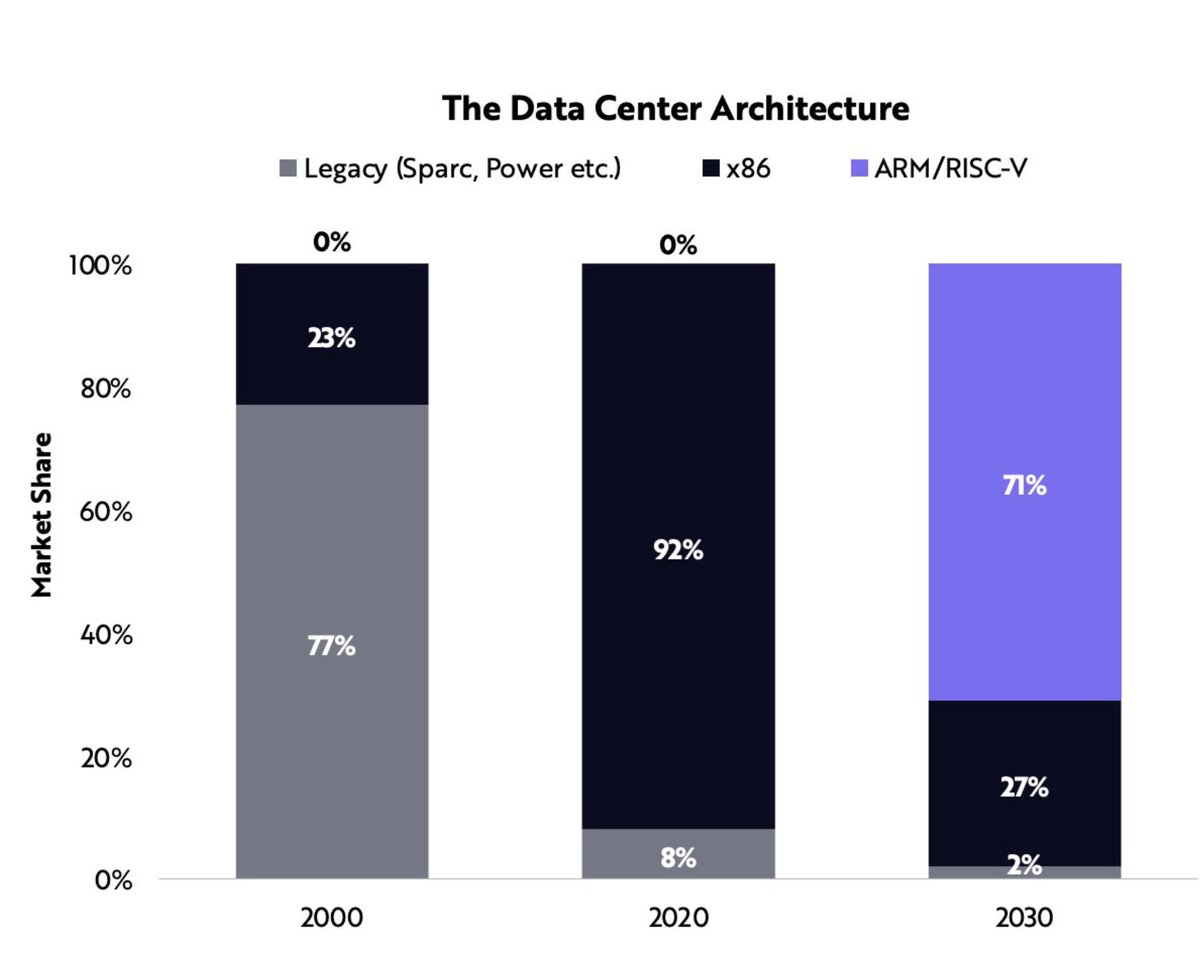
3/ Virtual world revenue hits $390B by 2025 (>2x today)
• Video game monetization shifting to in-app purchases
• Games are 3rd places (people spend 90m a day gaming in 2025)
• AR market (Snap, FB, Apple) set to explode
• Cost of VR (visual immersion) plummeting
• Video game monetization shifting to in-app purchases
• Games are 3rd places (people spend 90m a day gaming in 2025)
• AR market (Snap, FB, Apple) set to explode
• Cost of VR (visual immersion) plummeting
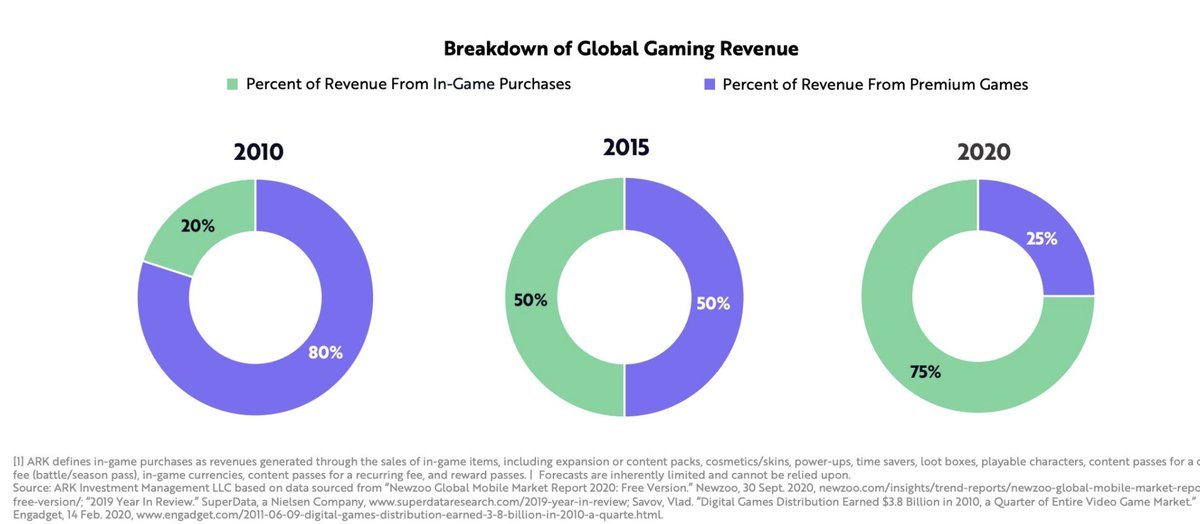
4/ Digital wallets are a $4.6T opportunity
• In US, digital wallets surpassing bank account holders
• Digital wallet CAC lower than banks
• Fully featured digital wallet (ecomm, payments, insurance, credit, brokerage) worth $20k/user
• 230m Americans x $20k/user = $4.6T
• In US, digital wallets surpassing bank account holders
• Digital wallet CAC lower than banks
• Fully featured digital wallet (ecomm, payments, insurance, credit, brokerage) worth $20k/user
• 230m Americans x $20k/user = $4.6T

5/ Bitcoin increases by +$40k if S&P 500 companies put 1% of their balance sheet cash to BTC
• Square, Tesla and Microstrategy set the precedent
• If S&P 500 companies make 10% of balance sheet cash, BTC rises by +$400k
• Square, Tesla and Microstrategy set the precedent
• If S&P 500 companies make 10% of balance sheet cash, BTC rises by +$400k
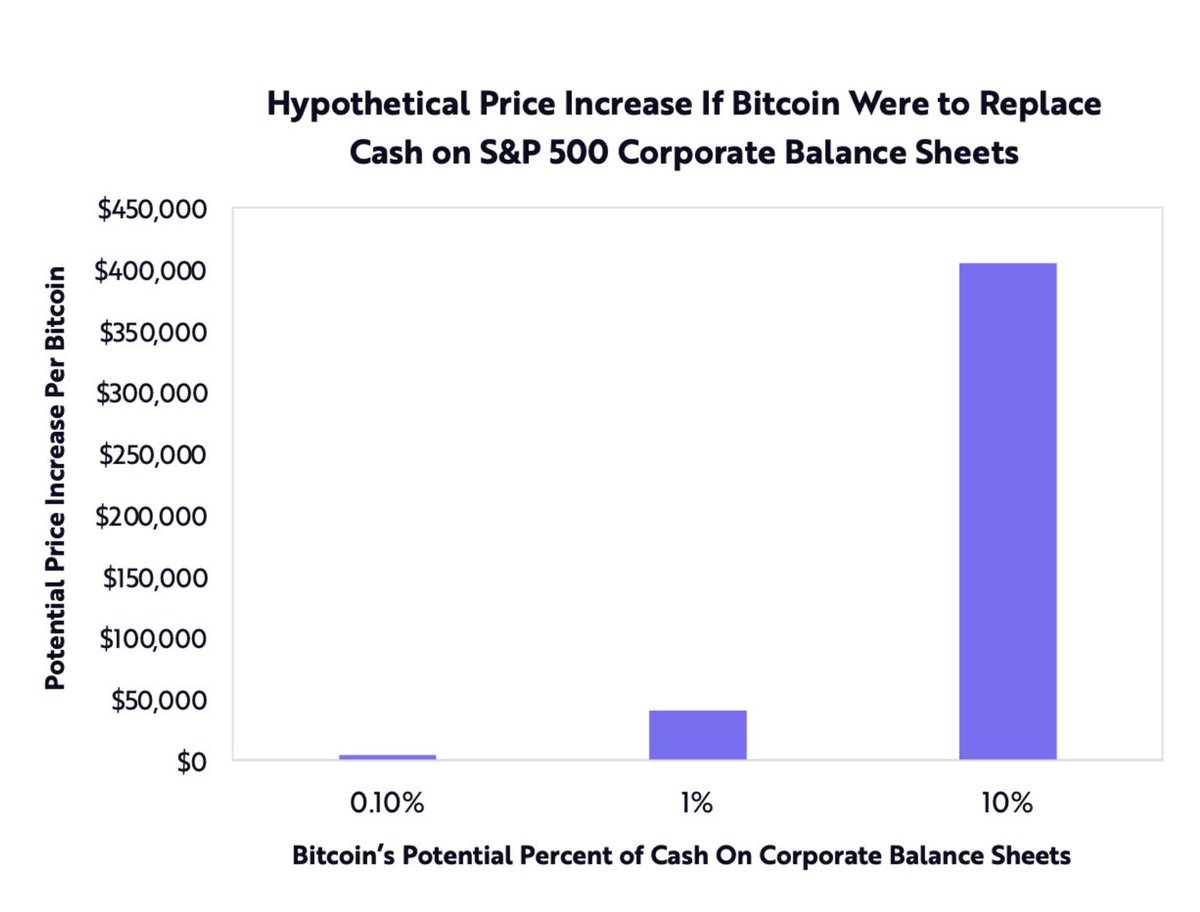
6/ Mainstreaming of BTC makes it worth up to $5T
• BTC trading volume approaching large cap stocks
• Institutions have options to access BTC (e.g., CME futures)
• If institutional money (HNW, Pensions, SWF, Insurance) allocate 2.5%-6.5% to BTC, its price could rise $200k-500k
• BTC trading volume approaching large cap stocks
• Institutions have options to access BTC (e.g., CME futures)
• If institutional money (HNW, Pensions, SWF, Insurance) allocate 2.5%-6.5% to BTC, its price could rise $200k-500k
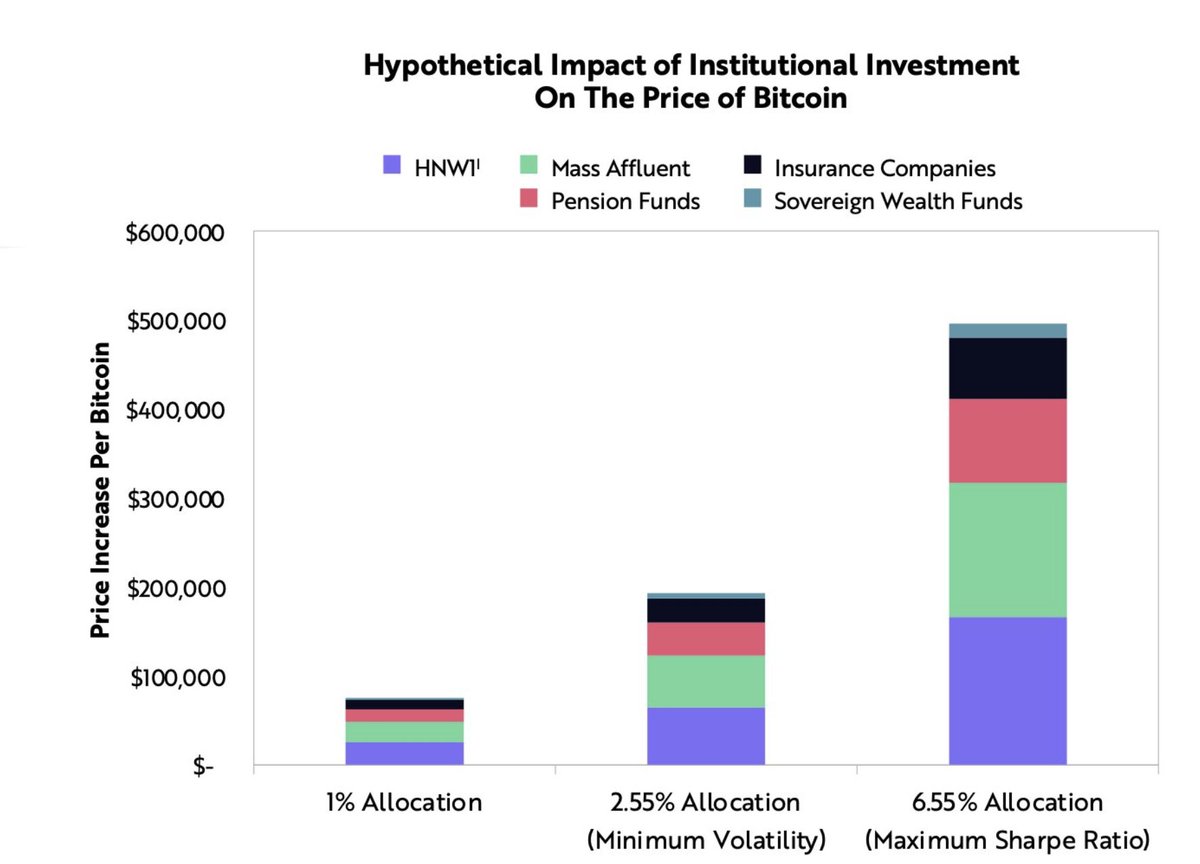
7/ EV sales will explode 20x: 2m (today) to 40m (2025)
• Total like-for-like EV ownership fell below Toyota Camry in 2019 (the sticker price will do same by 2025)
• "cell-to-vehicle" battery designs will increase volume density by 50% and further drop costs
• Total like-for-like EV ownership fell below Toyota Camry in 2019 (the sticker price will do same by 2025)
• "cell-to-vehicle" battery designs will increase volume density by 50% and further drop costs
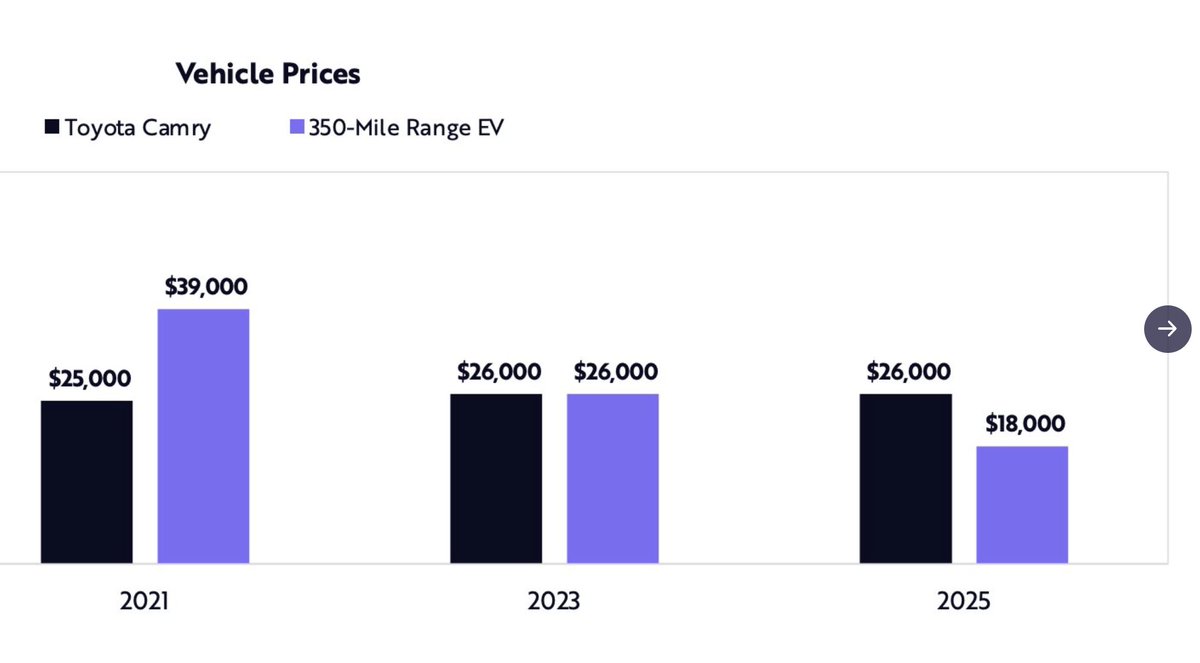
8/ Automation adds 5% (~$1.2T) to US GDP in next 5yrs
• Rate of automation in next 5yrs = past 25yrs
• Industrial robot demands has hit an inflection point (willing to pay upfront cost for automation)
• More automation = higher productivity = higher wages = lower prices
• Rate of automation in next 5yrs = past 25yrs
• Industrial robot demands has hit an inflection point (willing to pay upfront cost for automation)
• More automation = higher productivity = higher wages = lower prices
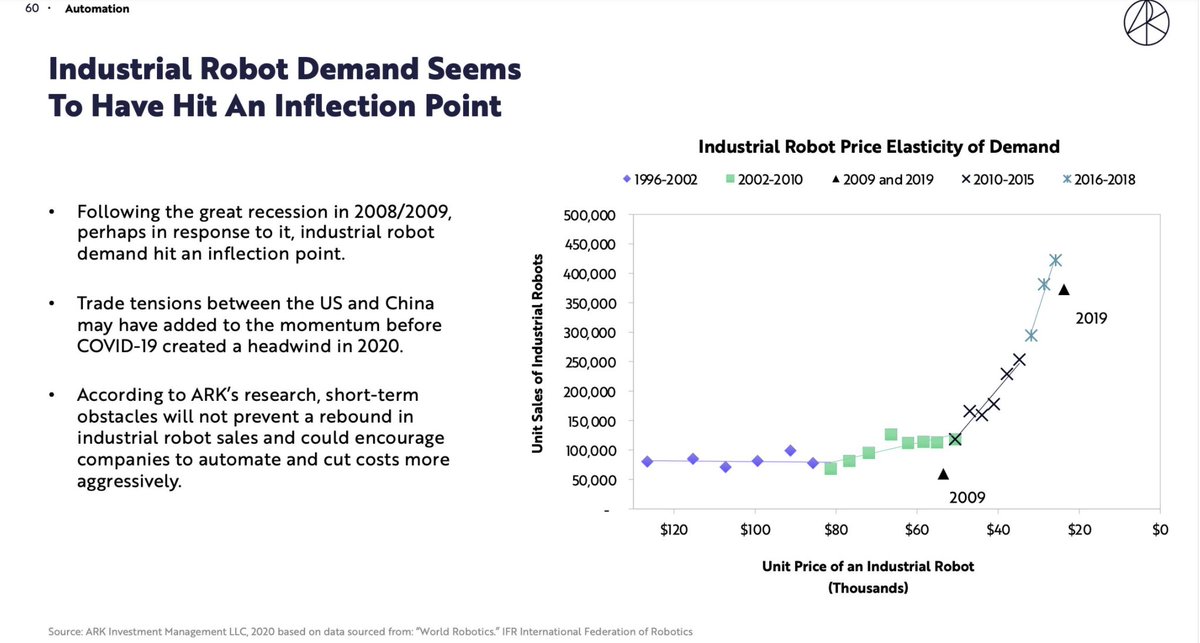
9/ Autonomous ride-hailing profits $1T per year by 2030
• Ride hailing already $150B industry
• Improvements in AV make economics of robotaxis work
• Cost per mile of personally owned vehicle plummeting ($1.70 on a horse, 1871 vs. $0.25 for AV, 2025)
• Ride hailing already $150B industry
• Improvements in AV make economics of robotaxis work
• Cost per mile of personally owned vehicle plummeting ($1.70 on a horse, 1871 vs. $0.25 for AV, 2025)
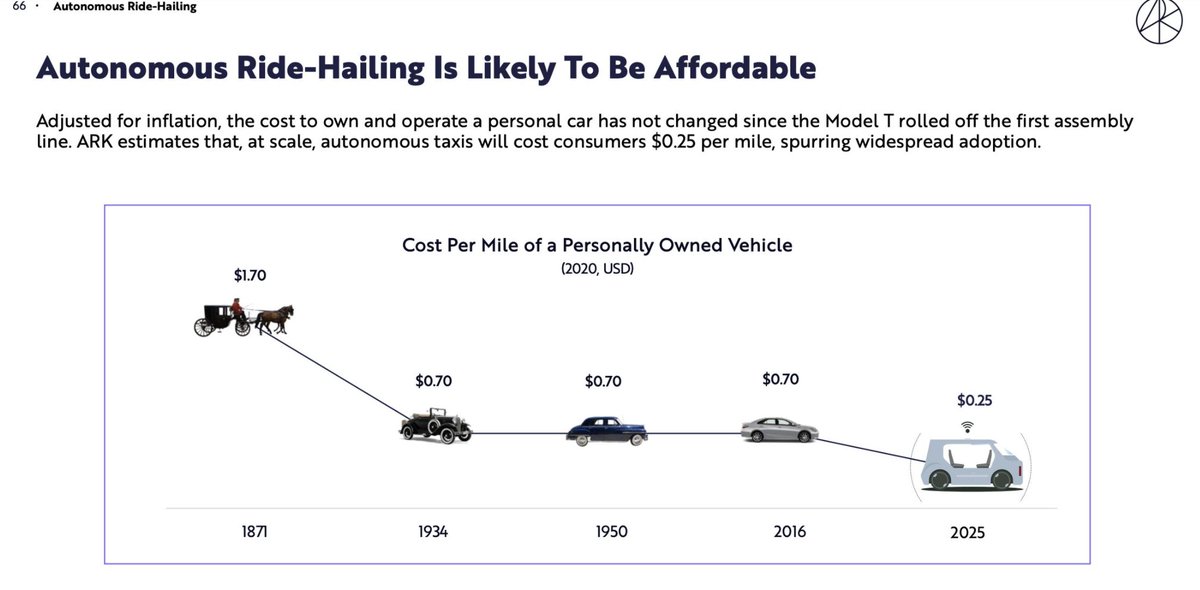
10/ Drone drastically reduce transportation costs
• Revenue by 2030: $275B (delivery), $50B (hardware sales), $12B (mapping)
• With improvements in AI and batteries, drones to be cheaper than cars, trucks, bike courier
• Revenue by 2030: $275B (delivery), $50B (hardware sales), $12B (mapping)
• With improvements in AI and batteries, drones to be cheaper than cars, trucks, bike courier
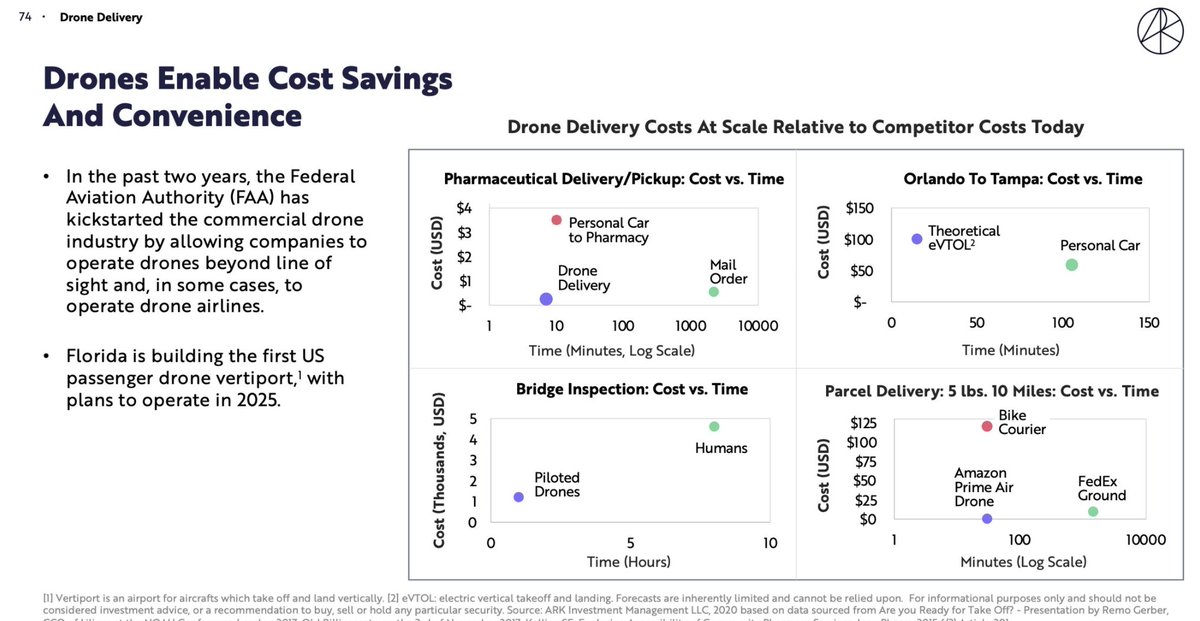
11/ Orbital space hit $370B annually
• Global connectivity via satellites (provide internet for other 50% of population)
• Hypersonic point-to-point travel (turn 10hr+ flights into 2-3hr flights)
• Re-usable rocket prices dropping (= more satellites)
• Global connectivity via satellites (provide internet for other 50% of population)
• Hypersonic point-to-point travel (turn 10hr+ flights into 2-3hr flights)
• Re-usable rocket prices dropping (= more satellites)

12/ 3D printing worth $120B by 2025
• Collapses time from design to production
• Shifts power to designers
• Reduces supply chain complexity
• Penetration levels: 50% in prototypes (market potential = $12.5B), 4% in molds/tools ($30B), 1% in end-use parts ($490B)
• Collapses time from design to production
• Shifts power to designers
• Reduces supply chain complexity
• Penetration levels: 50% in prototypes (market potential = $12.5B), 4% in molds/tools ($30B), 1% in end-use parts ($490B)
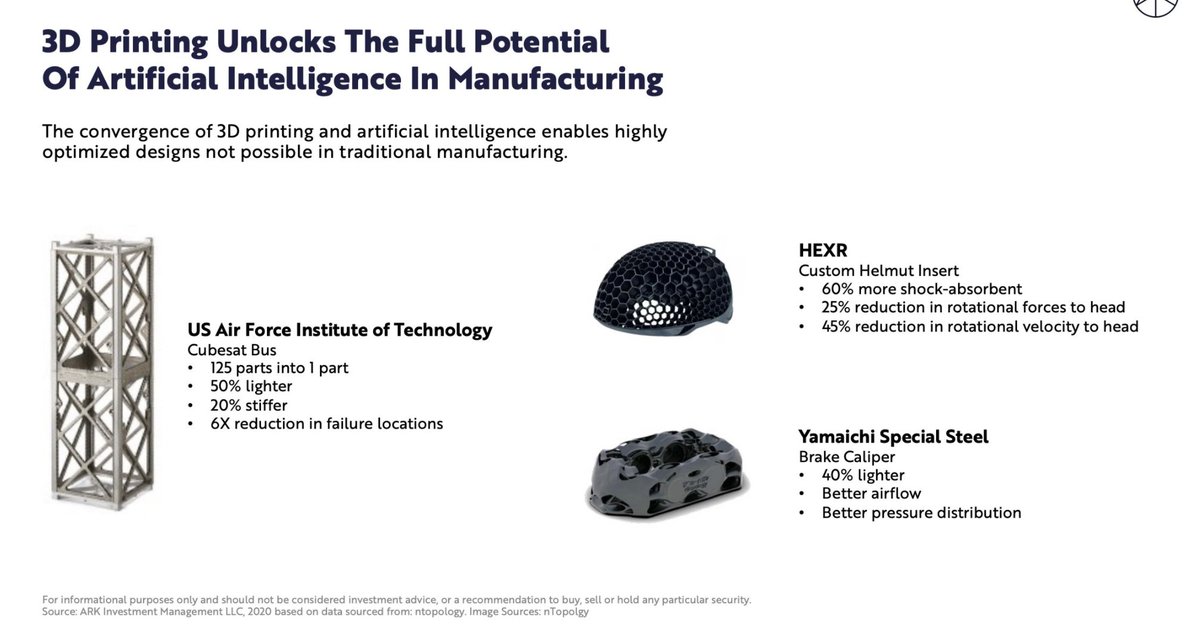
13/ Next-gen DNA sequencing worth $25B in 2025
• Shift from short-read (SRS) to long-read DNA sequencing (LRS) powers genomics revolution
• Bigger toolkit gives richer view into biology
• Used to be trade-off between accuracy (SRS) to comprehensiveness (LRS). No more tradeoff
• Shift from short-read (SRS) to long-read DNA sequencing (LRS) powers genomics revolution
• Bigger toolkit gives richer view into biology
• Used to be trade-off between accuracy (SRS) to comprehensiveness (LRS). No more tradeoff

14/ Liquid Biopsies to avert 66k cancer deaths per year
• ML-power DNA sequencing will allow liquid biopsies that can find cancer early (before solid tumor stage)
• Multi-cancer screening prices dropping
• Could prevent 66k deaths a year = 1.4m human life years
• ML-power DNA sequencing will allow liquid biopsies that can find cancer early (before solid tumor stage)
• Multi-cancer screening prices dropping
• Could prevent 66k deaths a year = 1.4m human life years
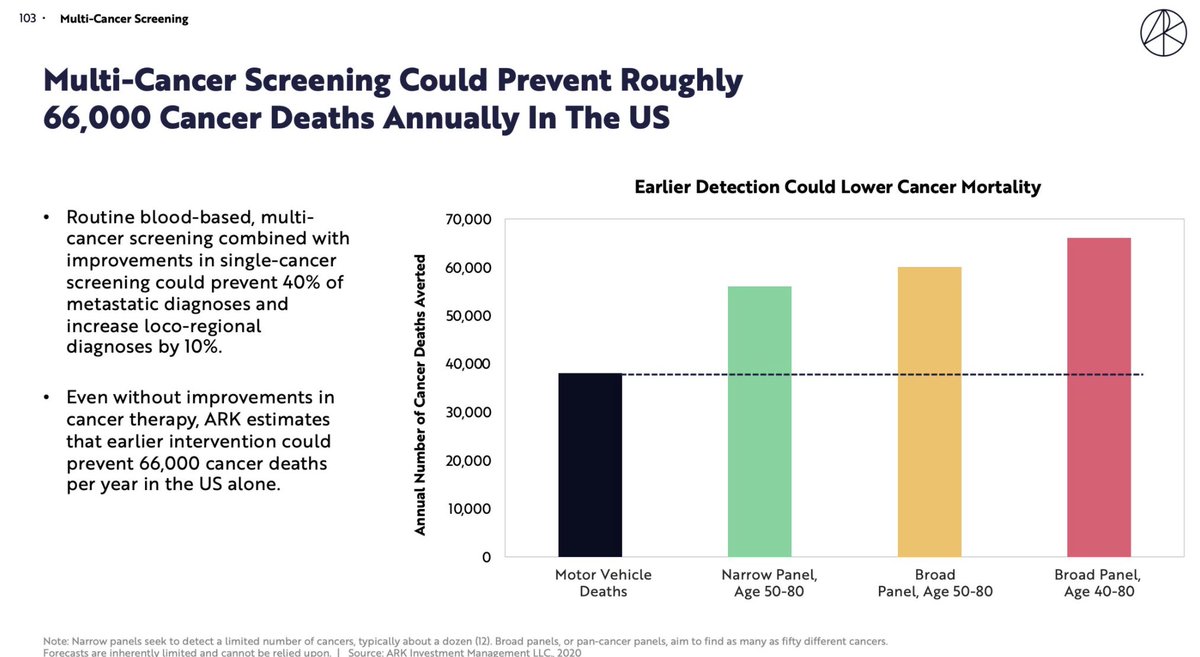
15/ TAM for oncology gene therapy rise 20x to $250B+
• This slide made no sense to me but here it is: "ARK Estimates That Allogeneic. Cells And Cellular Immunotherapies Could Create $250 Billion In Incremental Revenues."
• This slide made no sense to me but here it is: "ARK Estimates That Allogeneic. Cells And Cellular Immunotherapies Could Create $250 Billion In Incremental Revenues."

16/ Follow @TrungTPhan for other hot business takes (and really dumb memes).
Original Ark Doc: research.ark-invest.com/hubfs/1_Downlo…
Original Ark Doc: research.ark-invest.com/hubfs/1_Downlo…
• • •
Missing some Tweet in this thread? You can try to
force a refresh



